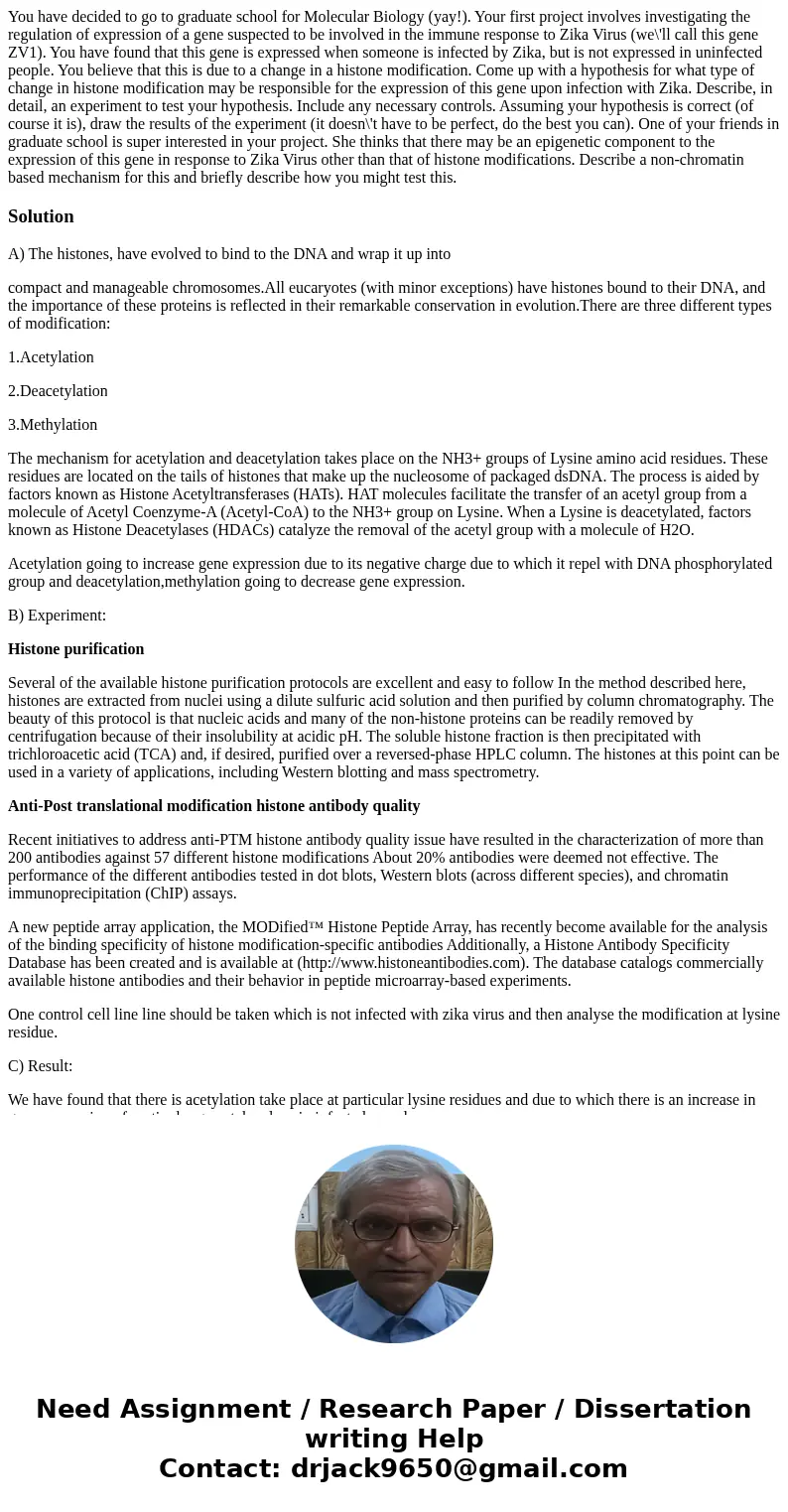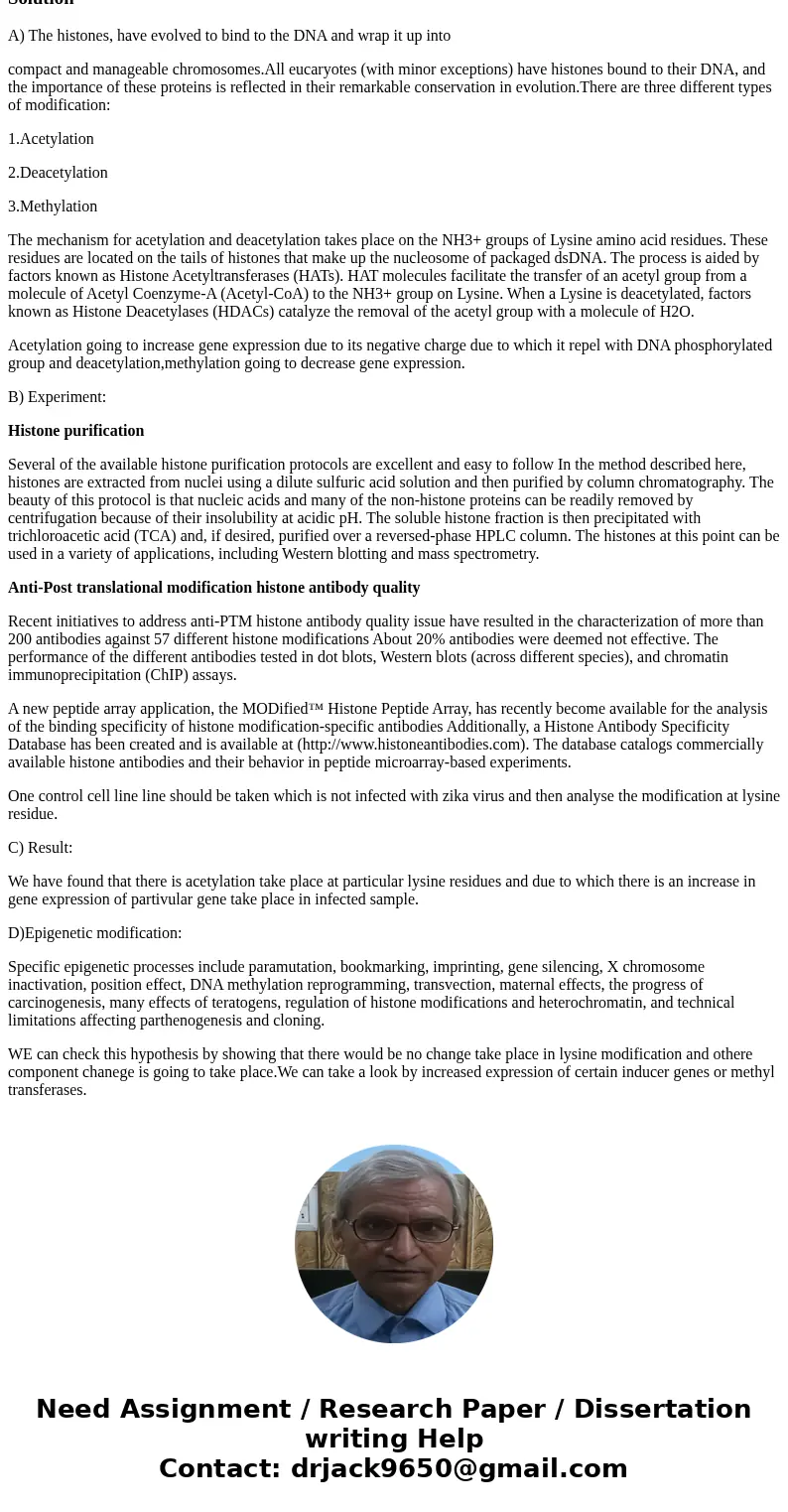You have decided to go to graduate school for Molecular Biol
Solution
A) The histones, have evolved to bind to the DNA and wrap it up into
compact and manageable chromosomes.All eucaryotes (with minor exceptions) have histones bound to their DNA, and the importance of these proteins is reflected in their remarkable conservation in evolution.There are three different types of modification:
1.Acetylation
2.Deacetylation
3.Methylation
The mechanism for acetylation and deacetylation takes place on the NH3+ groups of Lysine amino acid residues. These residues are located on the tails of histones that make up the nucleosome of packaged dsDNA. The process is aided by factors known as Histone Acetyltransferases (HATs). HAT molecules facilitate the transfer of an acetyl group from a molecule of Acetyl Coenzyme-A (Acetyl-CoA) to the NH3+ group on Lysine. When a Lysine is deacetylated, factors known as Histone Deacetylases (HDACs) catalyze the removal of the acetyl group with a molecule of H2O.
Acetylation going to increase gene expression due to its negative charge due to which it repel with DNA phosphorylated group and deacetylation,methylation going to decrease gene expression.
B) Experiment:
Histone purification
Several of the available histone purification protocols are excellent and easy to follow In the method described here, histones are extracted from nuclei using a dilute sulfuric acid solution and then purified by column chromatography. The beauty of this protocol is that nucleic acids and many of the non-histone proteins can be readily removed by centrifugation because of their insolubility at acidic pH. The soluble histone fraction is then precipitated with trichloroacetic acid (TCA) and, if desired, purified over a reversed-phase HPLC column. The histones at this point can be used in a variety of applications, including Western blotting and mass spectrometry.
Anti-Post translational modification histone antibody quality
Recent initiatives to address anti-PTM histone antibody quality issue have resulted in the characterization of more than 200 antibodies against 57 different histone modifications About 20% antibodies were deemed not effective. The performance of the different antibodies tested in dot blots, Western blots (across different species), and chromatin immunoprecipitation (ChIP) assays.
A new peptide array application, the MODified™ Histone Peptide Array, has recently become available for the analysis of the binding specificity of histone modification-specific antibodies Additionally, a Histone Antibody Specificity Database has been created and is available at (http://www.histoneantibodies.com). The database catalogs commercially available histone antibodies and their behavior in peptide microarray-based experiments.
One control cell line line should be taken which is not infected with zika virus and then analyse the modification at lysine residue.
C) Result:
We have found that there is acetylation take place at particular lysine residues and due to which there is an increase in gene expression of partivular gene take place in infected sample.
D)Epigenetic modification:
Specific epigenetic processes include paramutation, bookmarking, imprinting, gene silencing, X chromosome inactivation, position effect, DNA methylation reprogramming, transvection, maternal effects, the progress of carcinogenesis, many effects of teratogens, regulation of histone modifications and heterochromatin, and technical limitations affecting parthenogenesis and cloning.
WE can check this hypothesis by showing that there would be no change take place in lysine modification and othere component chanege is going to take place.We can take a look by increased expression of certain inducer genes or methyl transferases.


 Homework Sourse
Homework Sourse